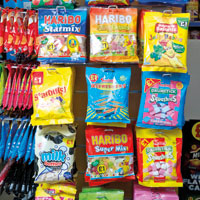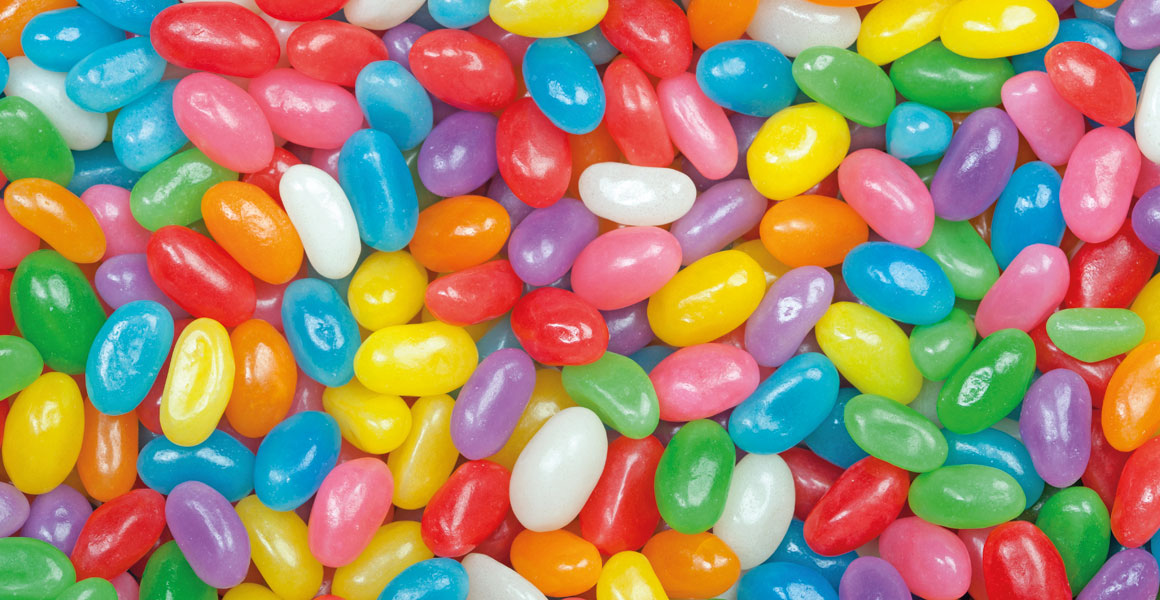Sugar confectionery sales are even sweeter in the summer. Joseph Lee finds out how you can sell more
What's the opportunity?

Confectionery is in the top four purchases in convenience stores, along with daily essentials such as bread, milk and drinks.
Eighty-one per cent of adults indulge in sugar confectionery at least once every three months, and many under-35s and families eat sweets weekly.
Although sales have suffered a 1.6% decline in convenience stores during the past year, sugar confectionery is still worth £1.2bn, with £564m sold in independent retailers alone.
Looking closer, the decline has been mostly confined to singles, where sales fell by £10m. Sharing bags and boxes boomed by contrast, with an extra £9m in sales.
While the soft drinks category has come under scrutiny over sugar, confectionery is less
under threat.
It can be a new opportunity, says Mark Roberts, trade marketing manager at Perfetti Van Melle.
“The Government is now focusing heavily on sugar, supported by Public Health England, which is looking to reduce sugar in our diets.
“Reduced and sugar-free confectionery products are key to supporting this impulse category,” he says.
Products deemed ‘better for you’ are growing by 20%, says Roberts. Even better, 73% of these sales are incremental, bringing new consumers into the category rather than merely substituting sales of
added-sugar products.
What to stock

“The key is giving shoppers’ choice. Look at the best performers and what adds to your core range,” says Mark Roberts at Perfetti Van Melle.
More than 75% of sugar confectionery are sweets, Roberts says, while less than a quarter is gum.
Leaving gum aside, Nestlé says that 68% of confectionery sales are fruit flavours, which are driving growth.
Susan Nash, trade communications manager at Mondelez International, says the company has been using new flavours to encourage growth, such as Maynards Bassetts Wine Gums introducing Tangy, Tropical and Merry Mix flavours, which brought in 300,000 new customers. Its latest addition is Wine Gums Mocktails, which contains flavours based on non-alcoholic cocktails aimed at young adults.
Mints are responsible for £139m of confectionery’s £1.2bn total sales. Mondelez is aiming to increase sales of its top Trebor lines with a convenient 100g pot format. “The larger format is ideal for the desk at work, in handbags and briefcases for the daily commute or in the car for long journeys,” says Nash.
Meanwhile, soft gum confectionery is worth £208.3m, according to Big Bear Confectionery, which is resurrecting its Barratt brand for products such as Fruit Salad, Refreshers, Nougat, Sherbet Fountain, Fruit Salad, Black Jack, Wham, Refreshers Softies and Fruit Salad Softies.
Creating great displays

When it comes to a category like confectionery, displays matter. “Signposting is key for confectionery as 80% of sales are purely based on impulse,” says Mark Roberts at Perfetti Van Melle.
He suggests retailers make a clear distinction between standard sugar confectionery, reduced-sugar and sugar-free confectionery by stocking similar products together with clear labels for the
different types of sweets.
Susan Nash at Mondelez says displays should emphasise the bestselling lines and place them in the centre of the fixture where they’ll catch the shopper’s eye. Manufacturers’ PoS can help to give it more impact.
Retailers should cover all the different shopper missions, with sharing bags for big nights in, smaller impulse treats and gift products, Nash says.
Russell Tanner, marketing & category management director at Tangerine Confectionery, suggests that it’s important to give price-marked packs a prominent position, to reassure potential impulse buyers that they’re getting good value for money.
“Creating a designated area for PMPs will help to boost sales of multiple products and ranges,” he says.
Cross-promotions pairing sweets and soft drinks, or other combinations, such as coffee to go and mints, can help maximise sales across categories.
“Sweets often go hand in hand for consumers organising nights in with family and friends over the summer,” says Tanner.
Latest trends

As well as core lines, it’s important you are tapping into the latest trends to grow your sales.
Levi Boorer, customer development director at Ferrero, says that the mints and gums category has been driven by an increased demand for fruit flavours over the past few years.
“We have acted upon this trend by developing insight-driven new Tic Tac products, to ensure retailers have a range of products to offer shoppers. In 2017 we introduced new Coconut to Pineapple flavour to the range after it performed incredibly well during consumer testing,”
Boorer explains.
Consumers are also becoming more and more aware of their health and wellbeing and are looking for options that work as part of a balanced and varied diet. Produced in small portion sizes, Boorer says Tic Tac products cater well to this trend.
Sour flavours are another major trend, with growth of 213% in the last year, prompting Big Bear to launch a Sour Apple flavour DipDab sherbet, as part of its revived Barratt range.
“Nostalgia and all things retro have been key trends in the confectionery industry over the past couple of years,” says Andrew Ovens, marketing manager at Big Bear Confectionery.
Catering for different shoppers

More than 50% of adults are looking to reduce their sugar consumption. That means the market is split down the middle: So how do you cater for everyone?
According to Nestlé, research shows that across the board, consumers are looking to manage their sugar intake without giving up treats. Consumers are unwilling to compromise on taste; the number one purchase driver for confectionery, the company says.
So in choosing a range that includes a balanced selection of classic sugar confectionery, reduced-sugar sweets and zero-sugar products, the company says a focus on maintaining the flavour customers expect is key.
Any reduced-sugar version of a favourite brand must ensure customers are still satisfied by the taste. For instance, its Rowntree’s line cut the sugar by 30% without compromising on its commitment to no artificial ingredients by using natural maize fibre to replace some of the sugar.
Find out what the key lines in sugar confectionery are with RN's What to Stock guide



Comments
This article doesn't have any comments yet, be the first!